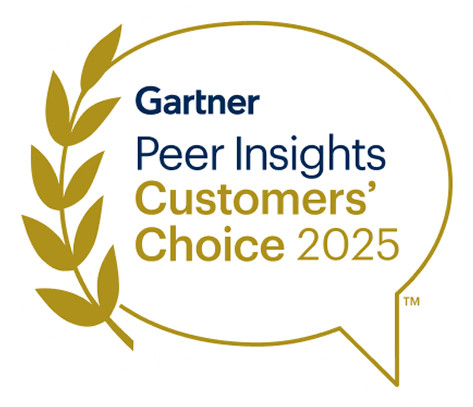Prevent Sensitive Data Breaches With Data Detection & Response (DDR)
Amidst the dynamic cybersecurity landscape, the need for advanced Threat Detection and Incident Response (TDIR) solutions has never been more crucial. Traditional tools often focus on addressing the complexities of security without data awareness. This deficiency can result in signal fatigue, and increased time to investigate.
Data Detection and Response (DDR) distinguishes itself by focusing on data-first threats, such as: compromise or manipulation of sensitive databases, unauthorized disclosure of sensitive information, intellectual property theft, and many other malicious activities targeting sensitive information. Finally, the obligation to inform and potentially compensate affected parties in compliance with regulatory requirements strengthens the need to enrich TDIR with a data-focused technology.
In this blog, we will start by explaining the difference between data detection and response (DDR) and cloud detection and response (CDR), and how data detection and response (DDR) fits into a cloud data security platform. We will then decode the distinctions between DDR and other TDIR solutions like Endpoint Detection and Response (EDR) and Extended Detection and Response (XDR). Lastly, we will explore why Sentra, with its DDR approach, emerges as a comprehensive and efficient data security solution.
Challenges in Traditional Approaches
Classifying data accurately poses a significant challenge to most traditional cybersecurity approaches. Behavioral analysis, while effective, often overlooks the critical aspect of data type, leading to potential blind spots and excessive false positives. Real-time prevention measures also face limitations, such as they can only protect the platforms they have visibility into, often restricting them to known and managed infrastructure, leaving organizations vulnerable to sophisticated cyber threats that target the public cloud.
Differences Between Data Detection and Response (DDR) and Cloud Detection and Response (CDR)
Cloud detection and response (CDR) solutions focus on overseeing and safeguarding cloud infrastructure, while data detection and response (DDR) specialize in the surveillance and protection of data. DDR plays a crucial role in identifying potential threats to sensitive data, irrespective of its location or format, providing an essential layer of security that goes beyond the capabilities of solutions focusing solely on infrastructure. Additionally, DDR empowers organizations to concentrate on detecting and addressing potential risks to their most sensitive data, reducing noise, cutting costs, and preventing alert fatigue.
When incorporating DDR into a cloud data security platform, organizations should see it as a crucial part of a strategy that encompasses technologies like data security posture management (DSPM), data access governance, and compliance management. This integration enables comprehensive security measures throughout the data lifecycle, enhancing overall cloud data security.
Why do I need a DDR if I’m already using a CDR product?
Data Detection and Response (DDR) is focused on monitoring data access activities that are performed by users and applications, while CDR is focused on infrastructure resources, such as their creation and configuration changes. DDR and CDR serve as detection and response tools, yet they offer distinct sets of threat detection capabilities essential for organizations aiming to prevent cloud data breaches and ransomware attacks.
Some examples where DDR can identify data-centric threats that might go unnoticed by CDR:
- Users who download sensitive data types that they don’t usually access.
- A ransomware attack in which amounts of business-critical data is being encrypted or deleted.
- Users or applications who gain access to sensitive data via a privilege escalation.
- Tampering or poisoning of a Large Language Model (LLM) training dataset by a 3rd party application.
- Supply chain attack detection when a compromised third party app is exfiltrating sensitive data from your cloud environment.
- Credentials extraction of high-impact keys that have access to sensitive data.
Lastly, DDR offers security operations center (SOC) teams to focus on what matters the most – attacks on their sensitive data, hence reducing the noise and saving time. While CDR detects threats such as impossible travel or brute force log-in attempts on any cloud resources, DDR detects such threats only when the target cloud resources contain sensitive data.
Threat Detection and Incident Response (TDIR) Solutions
Endpoint Detection and Response (EDR)
In the ever-evolving landscape of cybersecurity, Endpoint Detection and Response (EDR) plays a pivotal role in safeguarding the digital perimeters of organizations. Focused on monitoring and responding to suspicious activities at the endpoint level, EDR solutions are crucial for identifying and neutralizing threats before they escalate. Armed with advanced analytics and machine learning algorithms, EDR empowers technical teams to detect anomalous behavior, conduct thorough investigations, and orchestrate rapid responses to potential security incidents.
Extended Detection and Response (XDR)
Extended Detection and Response (XDR) is a solution designed to fortify organizations against sophisticated threats and extend protection beyond EDR. XDR seamlessly integrates threat intelligence, endpoint detection, and incident response across multiple security layers, offering a unified defense strategy. By aggregating and correlating data from various sources such as servers, applications, and other infrastructure, XDR provides unparalleled visibility into potential threats, enabling rapid detection and response. Its proactive approach enhances incident investigation and remediation, ultimately minimizing the impact of cyber threats across an organization's IT estate.
Enter DDR: Revolutionizing Data Security
Data Detection and Response (DDR) brings real-time threat detection to complement data posture controls, hence combining with Data Security Posture Management (DSPM) to address these longstanding challenges. Sentra, a leading player in this domain, ensures real-time data protection across various cloud environments, offering a comprehensive solution to safeguard data wherever it resides. DDR provides a layer of real-time threat detection that is agnostic to infrastructure and works well in multi-cloud environments - it works no matter where data travels.
DDR provides rich near real-time context to complement DSPM. Sentra’s DDR is not dependent on scanning your data. Instead, it continually monitors log activity (ex. AWS CloudTrail events) and can alert on any suspicious or unusual activity such as an exfiltration or unusual access - this can be from a malicious insider or outsider or simply unintended actions from an authorized user or a supply chain partner. Combined with DSPM, DDR provides enhanced context regarding data usage and related exposure. Sentra can help an organization to focus monitoring efforts on areas of greatest risk and reduce the ‘noise’ (false positives or inactionable alarms) from less contextually aware activity monitors.
Proactive and Reactive Data Security with Sentra's DSPM and DDR
Sentra takes a dual-pronged approach, combining proactive and reactive controls to fortify data security at every stage of a potential cyberattack:
- Weakening Defenses Detection: Continuously monitor for unauthorized changes to data security posture, identifying escalated access privileges or changes in encryption levels.
- Suspicious Access Detection: Instant alerts are triggered when a third party or insider accesses sensitive information, enabling swift action to prevent potential malicious activities.
- Reconnaissance: Detect an early stage of the attack when an attacker moves sensitive data across and within cloud networks in order to prepare for the data exfiltration stage.
- Data Loss and Ransomware Prevention: Real-time monitoring and alerts for accidental or unauthorized data movement, coupled with the enforcement of least privilege data access, prevent potential breaches.
- Data Exfiltration Detection: Sentra detects anomalous sensitive data movement in near real-time, providing quick notification and remediation before significant damages occur.
- Breach Recovery Acceleration: In the unfortunate event of a breach, Sentra provides guidance and contextual information, streamlining post-incident analysis and remediation.
Seamless Integration for Enhanced Efficiency
Sentra provides seamless integration into your security workflow. With over 20 pre-built or custom integrations, Sentra ensures that alert context is directly fed to the appropriate teams, expediting issue resolution. This integrated approach enables organizations to respond to potential threats with unmatched speed and efficiency.
Data Detection and Response (DDR) is not a replacement or superior solution, it is complementary to the others.
Companies need these technologies for different reasons:
- EDR for endpoint
- XDR for on premise
- CDR for cloud infrastructure
- DDR for cloud data stores

With Sentra, organizations get the best of both worlds – proactive and reactive controls integrated for complete data protection. Sentra combines DDR with powerful Data Security Posture Management (DSPM), allowing users to detect and remediate data security risks efficiently. It's time to revolutionize data security with Sentra’s Data Detection and Response (DDR) – your comprehensive solution to safeguarding your most valuable asset: your data.
To learn more, schedule a demo with one of our data security experts.











.webp)
.webp)


